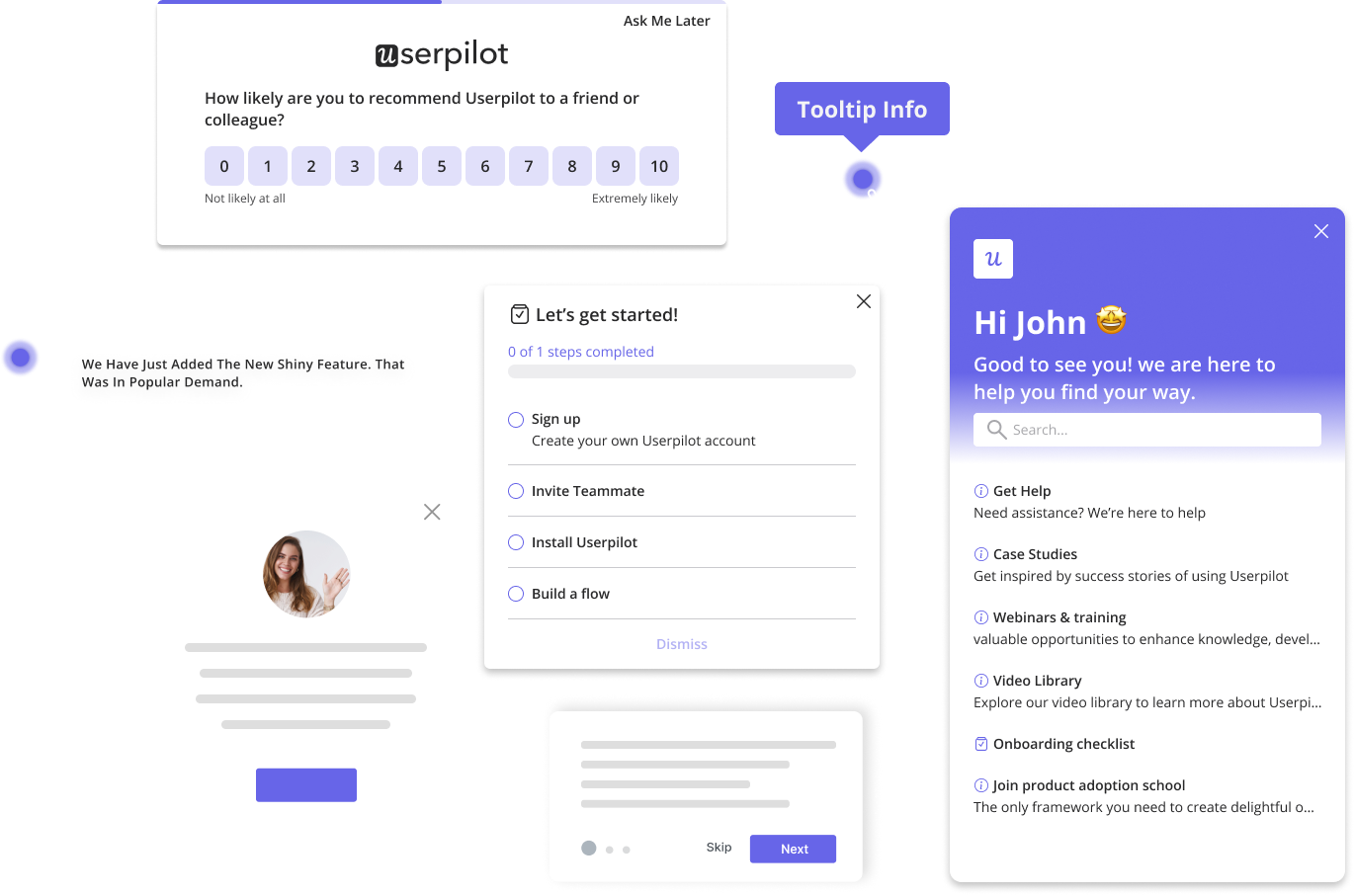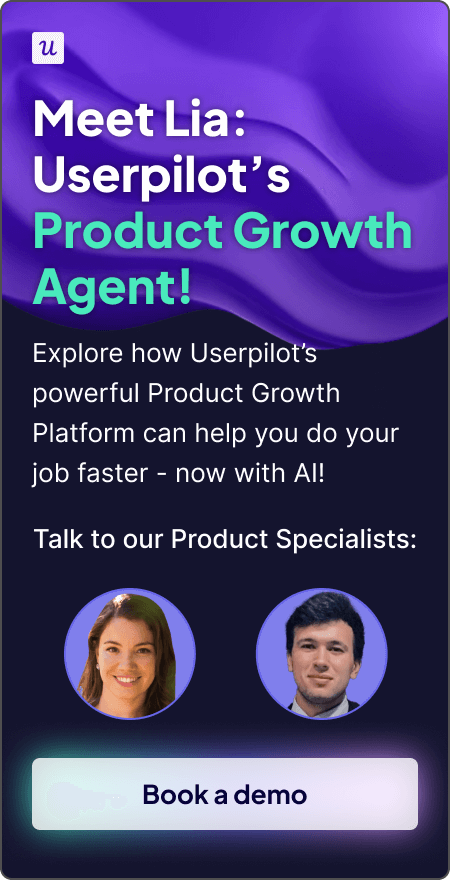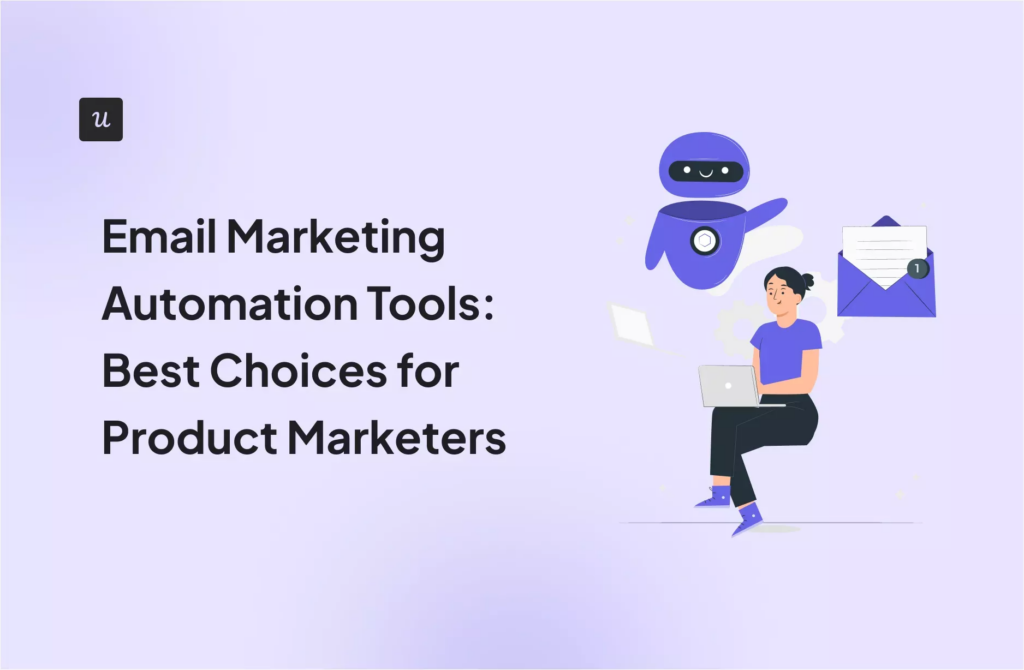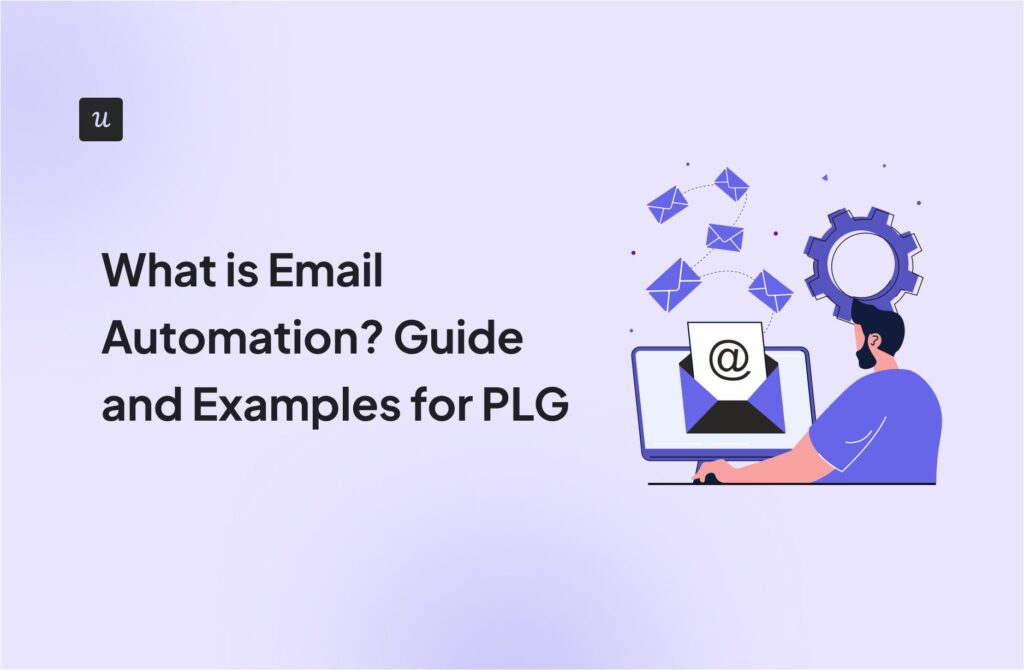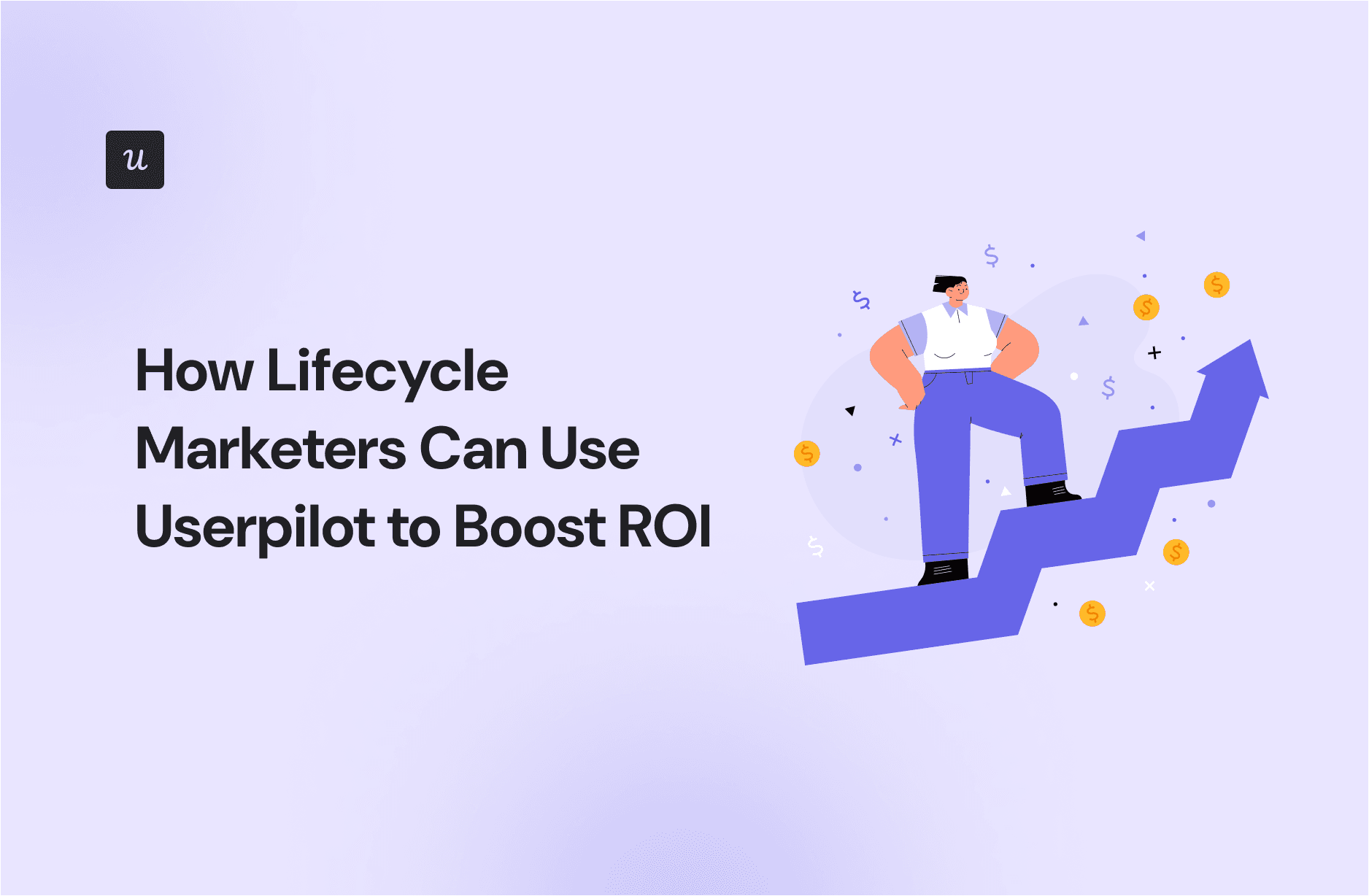
Airtable’s 2024 marketing trends report shows marketing teams use an average of 19 tools in their daily processes.
For lifecycle marketers, that often means separate platforms for email marketing, in-app behavior tracking, and mobile engagement.
Imagine trying to email a user about an advanced feature they were actively exploring, but your email tool only syncs once every 24 hours. By the time the message lands, the moment of intent is gone. Worse, what if they’ve already figured it out on their own? Now your message just feels out of touch.
Besides missing engagement opportunities, marketing teams in Airtable’s study report dealing with duplicate data and difficulty proving ROI for all their tools.
What’s the better approach? From our experience and what we’ve seen with our customers, it’s using an all-in-one product management platform that combines real-time product data with multi-channel messaging in one place. That way, you can easily trigger personalized, automated campaigns based on actual user behavior.
Let me show you how Userpilot can help you do it without writing a single line of code.
What’s your biggest lifecycle marketing challenge right now?
How are you currently trying to solve this?
What if you could unify the entire customer journey in one no-code platform? See how lifecycle marketers can use Userpilot to…
Stop juggling tools & start driving growth.
Unify analytics, in-app messaging, and email to create seamless, behavior-based journeys that convert and retain more users.
Try Userpilot Now
See Why 1,000+ Teams Choose Userpilot
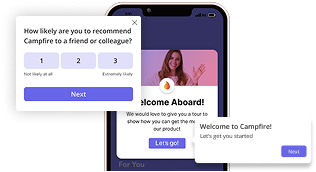
The challenge: Fragmented user journeys and ineffective marketing operations
One of the biggest hidden costs of disconnected tools is friction, plus the actual money lost. Gartner’s 2023 CMO Spend and Strategy Survey found that marketing teams spend around 25% of their total budget on MarTech, but only use 33% of the tools they’re paying for.
These challenges lead to three major pain points:
- Disconnection from real-time user behavior.
- A more generic and less effective approach to messaging.
- Inability to prove the ROI of your lifecycle marketing channels.
When multiple tools are tracking different slices of the user journey, you end up with a bloated MarTech stack that’s hard to justify during budget reviews.
Most email platforms, in-app tools, and product analytics software require complex integrations or engineering support to sync data. And that means marketers can’t move fast.
Instead of launching a re-engagement campaign in an afternoon, you’re stuck waiting on exports, aligning tracking events, or chasing down developer help for custom triggers.
Disconnected from real-time in-app behavior
Emails go out without the right context when your in-app behavior tool doesn’t sync data in real time. This often results in inconsistent messaging, user frustration, and lower engagement.
For example, imagine nudging a user to complete onboarding via email only to realize they finished the checklist yesterday.
These moments hurt performance. A report by SmarterHQ shows 72% of customers only engage with marketing messages tailored to their interests. Without real-time behavioral data, you miss that window of relevance, and your message gets ignored or flagged as noise.
Lacking true behavioral personalization
Most marketing emails still follow the same playbook: create a static segment, upload a CSV, and blast the same message to everyone. But in a product-led world, that just doesn’t cut it.
Let’s say a new user drops off halfway through a critical setup workflow. Ideally, you’d want to nudge them with a helpful tip or a shortcut within minutes. But that message will arrive too late to be useful if you’re stuck exporting data and uploading lists.
According to McKinsey, 76% of customers say they feel frustrated by a lack of personalization like this, and it often leads to lower conversion and retention rates.
Inability to prove email ROI
With separate tools and siloed data, proving the actual impact of your email campaigns becomes a guessing game.
For example, your email platform might show great open and click rates, but it’s almost impossible to tell what percentage of users who opened the email went on to complete your onboarding flow, activate a new feature, or perform any other desired in-app action.
The absence of such comprehensive insights makes you:
- Struggle to justify your marketing budget and demonstrate value.
- Miss opportunities to optimize user flows based on actual behavior.
- Rely on vanity metrics instead of data that ties directly to product outcomes.
Editor’s Note: As mentioned earlier, most marketing teams use an average of 19 tools, and keeping them all running isn’t cheap. A stack with separate platforms for email, in-app messaging, analytics, and automation can easily rack up $2,000 to $10,000+ per month, depending on usage and tier. Yet only 25% of marketing leaders have high visibility into ROI.
Before you continue spending on a fragmented tech stack, ask yourself: Are we truly getting ROI from each one?
Or better still…
The solution: Drive growth through integrated, behavior-based journeys
Userpilot eliminates the need for separate customer engagement platforms by bringing everything into a single, no-code workspace.
That means:
- Less tool-switching, fewer sync delays, and more time spent building campaigns that actually move the needle.
- Better personalization powered by real-time user actions.
- Predictable MAU-based pricing that saves you from the hidden fees of tool overload.
Here’s how our platform, Userpilot, makes it happen:
Create seamless multi-channel user journeys
The best way to hook users from the get-go and nurture long-term engagement is to deliver multichannel flows that feel natural and connected.
Whether via email, mobile, or inside your app, every interaction should act like a bridge that answers questions, builds trust, and guides users toward the next logical step in their journey.
Userpilot helps you build these cross-channel flows in minutes. Once live, they eliminate inconsistent messaging and remove the need for manual coordination between tools or teams. That means more time to focus on strategic customer-facing activities that actually drive retention and loyalty.
Automated campaign example: Say a user’s trial is about to expire. Below is how Userpilot can help you proactively guide them toward becoming a paying customer:
- Email: “Your trial ends in 7 days. Here’s what you’ll lose and how to keep it.”
Userpilot provides fully customizable templates like the one below to help you speed things up. If you need more creative freedom, you can use our drag-and-drop editor to build from scratch and save your designs for future use.

- In-app: When they log back in, show a targeted modal with a message like “Don’t lose your progress. Unlock full access by upgrading now.” Userpilot allows you to embed pictures and videos in your modal. You can also add a clickable CTA that takes them directly to your pricing page or a side-by-side feature comparison.
- Push notification: If the user still hasn’t upgraded, you can make a final attempt a day before expiration through a mobile push that says, “Time’s almost up! Grab your 10% discount before your trial ends tomorrow.”
These messages are sent through the same workspace, so no third-party connectors are needed, and you can get as granular as you want. For example:
- You could trigger a different email sequence for users who explored premium features but haven’t activated them.
- In-app, you might show a spotlight only to users who skipped a key setup step, paired with a tooltip that explains its value and points them in the right direction.
- For push notifications, you could exclude users who visited your pricing page within the last 24 hours, ensuring you don’t over-message.
Trigger hyper-personalized emails based on real-time user behavior
With Userpilot, you can go beyond static segments to deliver hyper-personalized emails triggered by live user actions across your app.
Let’s say a user has just completed the first step of your onboarding process but hasn’t touched the next one in 24 hours. Instead of relying on a delayed CSV export or a generic drip campaign, our platform lets you trigger a contextual email immediately.
You could choose from any of the email templates and send an email with a subject line like: “Need help completing setup? Here’s a quick tip to unlock your first value faster.”
And because everything runs on live event data, you’re never stuck emailing stale segments or guessing who needs what.
Before publishing your email, you can head over to the “Settings” tab to fine-tune the trigger logic, target audience, intended goal, and send frequency.
From testing different flows myself, I’ve found that getting these rules right early on saves hours of rework and makes your campaigns feel way more thoughtful.
Here are a few behavior-based email flows you can set up with Userpilot:
- Trigger a trial conversion email when a user engages with premium features twice but hasn’t upgraded.
- Set up an activation reminder email if a user hasn’t completed setup within 48 hours.
- Send a proactive support tip when users encounter an error event more than once.

Userpilot also offers AI-powered localization that allows you to translate your emails in multiple languages without needing separate campaigns.
Unify analytics to measure full-funnel impact and prove email ROI
Userpilot’s extensive analytics features help you connect the dots between email messaging and in-product behavior.
Instead of obsessing over vanity metrics like open rates, you can measure how many users clicked through your onboarding email and completed the setup flow. Or how a reactivation campaign led to renewed usage of a dormant feature.
This unified visibility removes the black box around email effectiveness and helps you:
- Prove marketing ROI.
- Justify your budget and headcount with quarterly reporting tied to real product metrics.
- Identify leaks and optimize funnels based on complete, real-time data.
- Confidently set and measure KPIs directly tied to lifecycle campaigns.
Since all this happens in one place, you can easily run targeted experiments across multiple journey stages and iterate quickly based on what’s working.

Accelerate activation and retention with Userpilot
Userpilot takes the friction out of lifecycle marketing by combining email, in-app messaging, and product analytics into one seamless workspace.
That means fewer tools to juggle, less budget lost to unused features, and no more waiting on engineers to launch campaigns or test ideas.
Ready to give it a try? Book a demo to begin!

